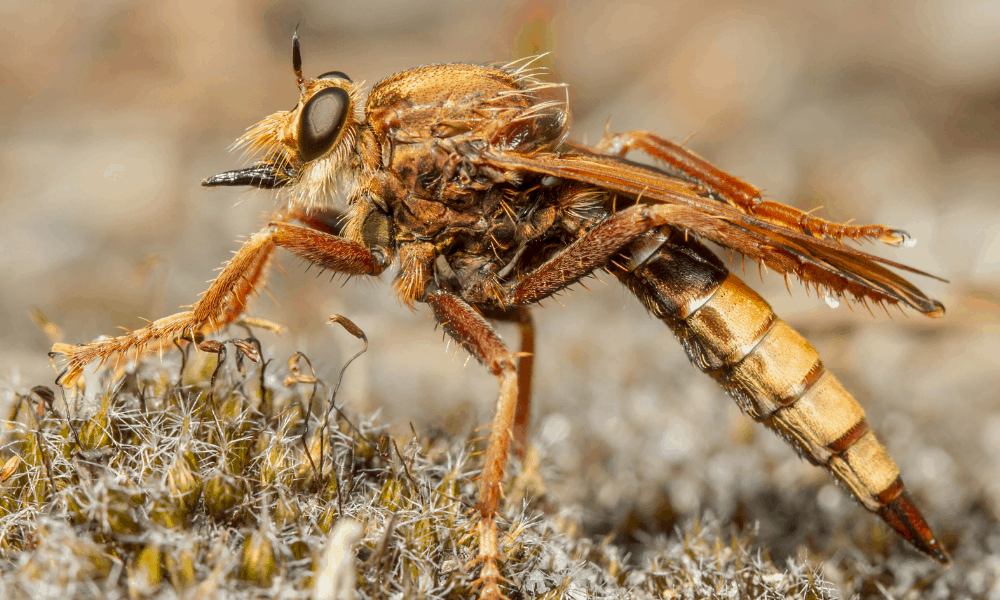The hornet robber fly, Asilus crabroniformis, is a species of robber fly native to Southern England and Wales. It is a very large predatory fly that lays its eggs in rabbit and cow dung and is thus threatened by changing agricultural practices. As one of the largest and most charismatic insects in Britain, it is the subject of conservation efforts and can be found today in open clearings, downlands, and heath. This species of fly has some amazing abilities that make it one of the most powerful insect predators in its native range and one of the most fascinating insects in Britain.
Combat Abilities
The hornet robber fly is capable of subduing very large prey, often much larger than the fly itself. In fact, many species of robber flies are capable of consuming venomous insects like wasps or hornets, fare most other animals will not touch. The hornet robber fly happily attacks bees, grasshoppers, and even heavily armored dung beetles that it dispatches with ease thanks to a powerful build, a protective muzzle of hair (called a mystax) on the head of the fly, and a powerful piercing mouth organ that injects a deadly venom into its prey.
Powerful Venom
Once a robber fly has used its piercing mouthparts to breach the exoskeleton of its insect prey it injects a powerful venom into the insect body. This is what makes the bite of a robber fly so painful to humans, though it is not particularly dangerous. To insects, however, this bite is deadly. The hornet robber fly uses a chemical cocktail of neurotoxins and proteolytic enzymes to paralyze the prey and liquify its insides, which the hornet robber fly can then slurp up through its mouthparts, called the hypopharynx.
Clever disguise
The hornet robber fly has a very wasp-like appearance for a reason. This coloration is a form of mimicry meant to deter would-be predators by essentially convincing them that the robber fly is in fact a hornet with a painful sting. The hornet robber fly spends a lot of time in the open during the daytime, waiting for prey to pass by, and as such it must appear as threatening as possible in order to survive.

Incredible flight skills
Flies as a whole are excellent fliers, likely the best in the entire insect kingdom. Robber flies are no exception to this, using their excellent flight skills to attack their prey. They are so fast that they can snatch insects directly from the air. They accomplish this with a pair of organs, called halteres, which evolved from a hindwing. These organs allow the fly to pinpoint its position in space. Robber flies also have enormous compound eyes that are extremely sensitive and can see both in front, above, and behind them. Halteres and excellent vision allow for the excellent flight skills that make this insect a terrifyingly effective hunter.
Voracious babies
The larvae of the Hornet robber fly look nothing like the adults, appearing as an armored maggot. The adults lay their eggs on dung, dung in which many other insect species are living. Like their parents, robber fly larvae are also predatory, however, feeding upon other insects that inhabit the dung that their parents placed them in.
